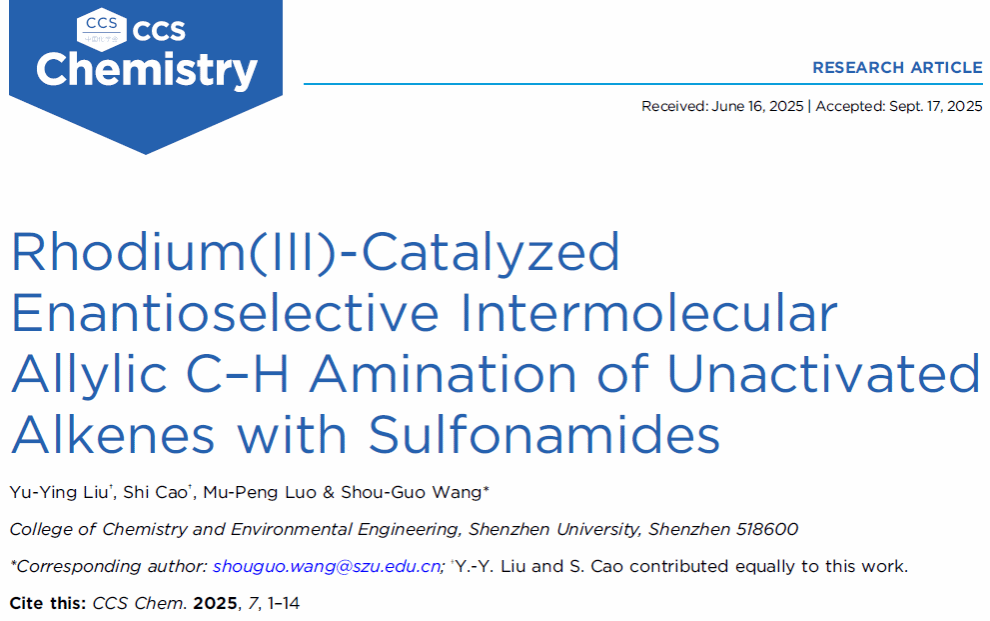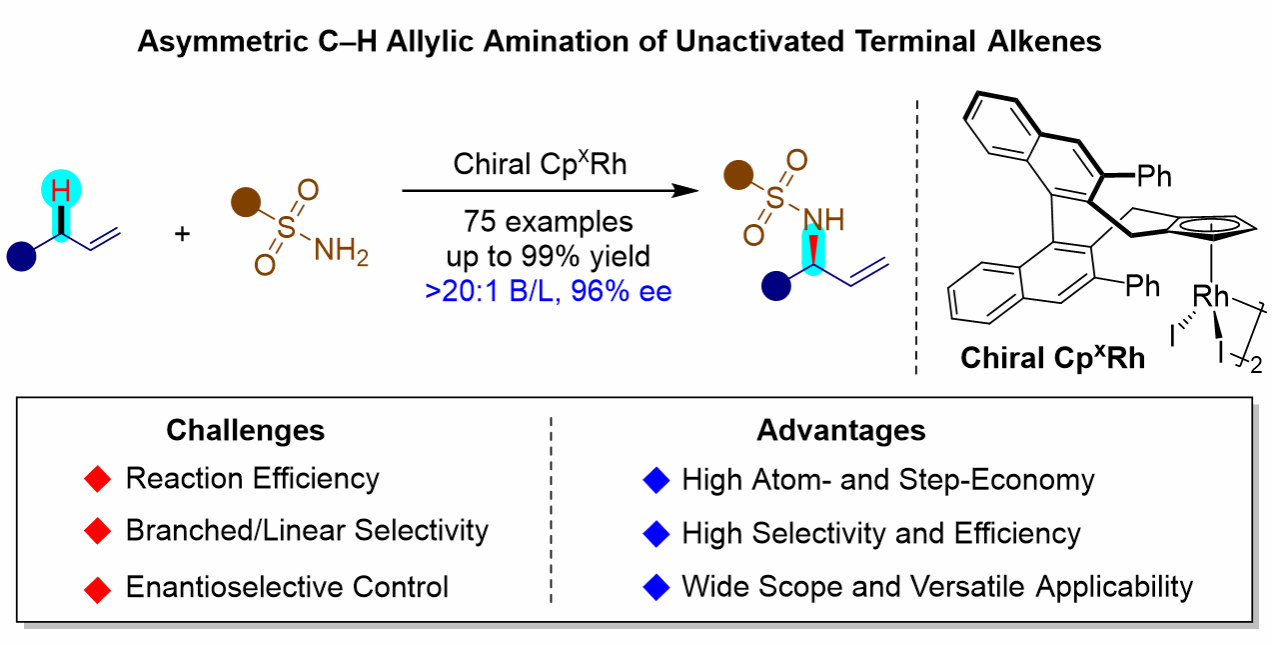Recently, the research team led by Prof. Shou-Guo Wang from the College of Chemistry and Environmental Engineering at Shenzhen University published a research article titled “Rhodium(III)-Catalyzed Enantioselective Intermolecular Allylic C–H Amination of Unactivated Alkenes with Sulfonamides” in CCS Chemistry (Impact Factor: 9.2; CAS JCR Q1; Top Journal). Prof. Shou-Guo Wang served as the sole corresponding author, with Master’s student Yu-Ying Liu and Associate Prof. Shi Cao as co-first authors. Shenzhen University is listed as the only corresponding institution.

Chiral allylic amines are key structural motifs that widely exist in pharmaceuticals, natural products, and agrochemicals. Direct enantioselective allylic C–H amination has emerged as a powerful and atom-economical strategy for the asymmetric synthesis of these valuable molecules. However, achieving both high regio- and enantioselectivity in the allylic C–H amination of unactivated terminal alkenes remains a long-standing challenge in organic synthesis. In this study, Prof. Wang’s team developed a chiral CpxRh(III)-catalyzed enantioselective intermolecular allylic C–H amination of unactivated terminal alkenes with sulfonamides, providing efficient access to enantioenriched branched allylic amines with excellent yield, regioselectivity, and enantioselectivity (up to 99% yield, >20:1 branched/linear ratio, and 96% ee). The key to this success lies in the use of in situ generated hypervalent iminoiodinanes, derived from sulfonamides and PhI(OPiv)₂, which serve as effective nitrene precursors enabling highly efficient asymmetric nitrogen transfer. This study not only provides a green and versatile catalytic platform for the synthesis of chiral allylic amines but also demonstrates the great potential of C–H bond functionalization strategies in advancing modern organic synthesis and drug discovery.

This work was supported by grants from Guangdong Basic and Applied Basic Research Foundation (2024A1515011368); Science, Technology and Innovation Commission of Shenzhen Municipality (JCYJ20210324101810028, JCYJ20220818101601004, JCYJ20220818095801004); Scientific Foundation for Youth Scholars of Shenzhen University (868-000001033009). S.-G.W. is indebted to Shenzhen University for providing a starting grant.
Link to paper:
https://www.chinesechemsoc.org/doi/epdf/10.31635/ccschem.025.202506179
